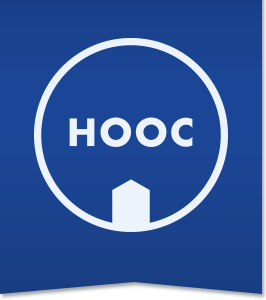 Login
Login To enable seamless integration of sensors and actuators into building and infrastructure systems, HOOC offers LoRa-based connectivity via its own HOOC gateway. Until now, only a limited number of compatible devices could be connected this way. One example from this HOOC portfolio is the ELT2 by Elsys. This sensor was delivered pre-configured, allowing customers to integrate it into the HOOC system simply by entering its serial number. Once registered, the sensor’s temperature and humidity readings were transmitted to the HOOC Cloud via the HOOC gateway and made available in both the HOOC ManagementPortal and the HOOC app.
HOOC LoRa has now been enhanced with several new and exciting functionalities.
The previously mentioned ELT2 sensor can now be integrated into the HOOC system not only in its pre-configured version but also in a generic version. Individual parameterization is done directly via the Elsys app using NFC technology. Since the ELT2 hardware has always supported various input types, the new parameterization flexibility now allows for the connection of external wired sensors — such as temperature sensors like the PT1000 or devices that use 0–10 V or 4–20 mA signals. This significantly expands the range of applications and enables the integration of a wide variety of wired sensors.
In addition to wired sensors, HOOC now also enables the integration of a wide range of third-party devices via The Things Network (TTN). TTN is a global, open-source IoT network based on the LoRaWAN protocol. It offers broad compatibility with LoRa sensors for all kinds of IoT applications. For HOOC customers, this means that any LoRa sensor can transmit data to the TTN network either a) via a HOOC gateway or b) via a community-operated TTN gateway. From there, the data is transferred into the HOOC system via the MQTT protocol, where it can be further processed if needed (see point 3).
Admittedly, data point mapping and the HOOC Converter are not new features. However, it’s still worth illustrating that the data from the many newly connected sensors – whether via cable, LoRa, or gateways – is not only read into the HOOC system but can also be further processed there. This happens through data point mapping or protocol conversion. For example, sensor values transmitted to the HOOC Cloud and captured in Remote Control can be forwarded via Modbus to a PLC, which in turn controls a specific system or machine.
Instead of being limited to the HOOC portfolio, practically any LoRa sensor on the market can now be integrated into the HOOC system, with its data available for further use. This opens up entirely new fields of application beyond the previously established indoor climate measurements, particularly in the areas of building renovation and system monitoring. It also creates new possibilities in smart factory, smart farming, and smart city contexts. For example, modern flow, particle, and radiation sensors can now be used for advanced measurements in houses an buildings. In agriculture on the other hand, sensors for soil moisture, for wind, weather, and many other parameters can be integrated. In urban environments, noise, speed, light barrier, parking, bicycle counting, bridge structure, and waste fill level sensors are also just a few of the many devices that can now be seamlessly integrated into the HOOC system.